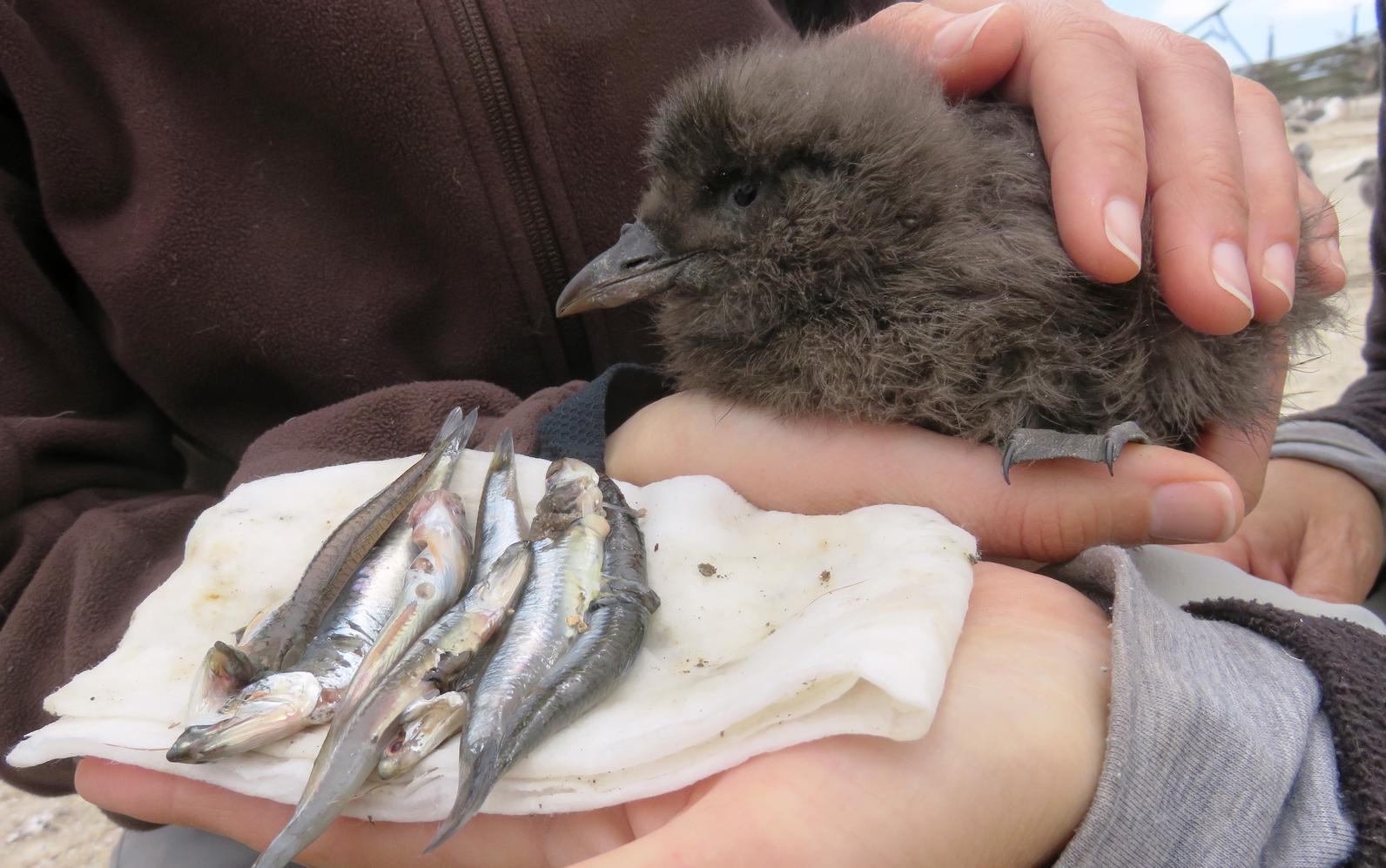
Northern anchovy (Engraulis mordax) is the number one seabird food on much of the west coast. Anchovy is a great food for birds because it is rich in protein and oil, tends to occur in dense schools close to the surface, and it’s available year-round in coastal areas, bays and inlets. Since 2009, federal as well as independent studies have confirmed that the California and Oregon population of anchovy has collapsed to levels as low as 1-5% of historic average.
The dearth of anchovy is reflected in impacts to anchovy-dependent seabirds, including Common Murre die-offs and poor reproductive performance in California Least Tern and California Brown Pelican. It has affected Sooty Shearwater, which rely on anchovy on the West Coast to fuel their journey back to breeding grounds in the southern hemisphere. Forage fish stocks naturally fluctuate, but this is an unusual low point for anchovy, likely brought on by a combination of factors. The collapse was not caused by overfishing, though continued fishing on a collapsed stock may be suppressing recovery. Local depletion by fisheries in key feeding or breeding areas may also be impacting dependent predators.
Considering these issues, it is disappointing that in November, citing incomplete information, federal fisheries managers failed to reduce the harvest quota of anchovy from its fixed level of 25,000 tons to a more precautionary 5,000-7,000 tons recommended by Audubon and the Pew Trusts. Fishing on a forage stock when it has collapsed is not consistent with federal law and could hinder stock recovery and further impact birds and other predators. The U.S. Fish and Wildlife Service, Region 8, also suggested a revised catch level to protect Brown Pelicans and other seabirds in the wake of the collapse of the anchovy stock.
Oceana requested the Council close the fishery entirely, noting that while fishing did not cause the collapse of the stock, allowing fishing at levels close to the actual size of the collapsed stock is illegal under federal law. Within a week of the Council’s decision, Oceana sued the federal government and this lawsuit could – and should -- result in an adjustment to the interim harvest quota that will better protect the anchovy stock and dependent predators until it can recover.
Despite the setback with the harvest quota, fisheries managers made a favorable decision to move forward on making badly-needed updates to anchovy management. These steps, to be developed and adopted in the coming two years, will ultimately ensure anchovy areprotected from overfishing especially when at low stock sizes. This will allow the stock to recover after collapse, and will help to ensure adequate forage for dependent predators.
During this process, Audubon and partners will be working to ensure that the needs of seabirds are well integrated into an “optimal yield” framework that will include a harvest control rule that sets annual quotas based on condition of the stock each year, and a cutoff under which fishing may not take place. Annual quota setting is standard practice for actively fished stocks such as anchovy, and particularly important considering the impacts of climate change, which is causing greater variability and unpredictability in fish stocks due to changing ocean conditions.
Long-term studies on breeding seabirds in California will help us better understand how seabirds are being impacted by fluctuations in the availability of anchovy. For example, biologists at Oikonos Ecosystem Knowledge have studied Rhinoceros Auklet diet at Año Nuevo Island in central California since 1993. Their studies clearly show that anchovy is the most important prey for the species at this colony, making up 100% of chick diet in some years.
Similarly, data collected at the Farallon Islands National Wildlife Refuge by Point Blue Conservation Science show that northern anchovy has historically been a very important component of diet for many seabirds at this global Important Bird Area including common murre, Brandt’s cormorant, rhinoceros auklet and western gull. Prey consumption models suggest that Farallon seabirds alone can consume over 90,000 tons of anchovy per year. However, between 2009 and 2014, reflecting the collapse in stocks, anchovies were virtually absent from seabird diet. While some seabirds were able to partially compensate for this loss by switching to alternate prey, other species such as Brandt’s cormorants and western gulls suffered extremely low breeding success and population declines. Point Blue has also found that at least since studies were initiated in 2001, the federally endangered California least tern has experienced higher reproductive success in central California than in southern California, due in large part to differences in the proportion of anchovy in chick diet.
Audubon supports sustainable fisheries, and that means ensuring forage fish are protected and supporting locally-sourced seafood. In the coming year, the Audubon network including Audubon California, the Audubon Society of Portland, San Diego Audubon, and Sea and Sage Audubon will be working with the Pew Trusts and Oceana to protect anchovy for our beautiful marine and coastal birds. We will keep you updated and ask for your voices when help is needed.
By Anna Weinstein
Monthly Giving
Our monthly giving program offers the peace of mind that you’re doing your part every day.




